Repair of a Failed Slope Using Geogrid
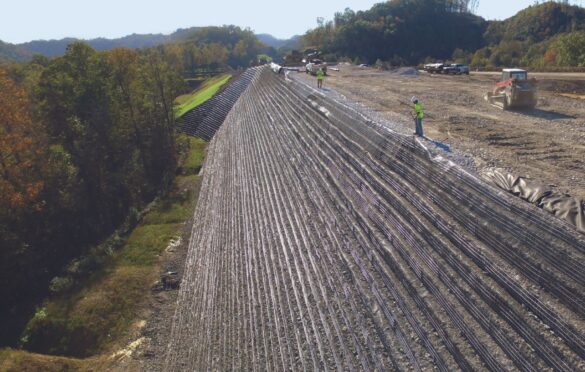
Introduction
In the realm of engineering geology, the stabilization and repair of slopes are paramount tasks to prevent catastrophic failures and ensure the safety of infrastructure. One innovative and effective method for repairing a failed slope is the utilization of geogrids. In this comprehensive guide, we will delve into the intricacies of repairing a failed slope using geogrid, exploring the principles, methods, and best practices in this field. By the end of this article, you will have a profound understanding of how geogrids can be employed to restore stability to unstable slopes and protect valuable assets.
Understanding Slope Failures
Slope failures, often referred to as landslides, are geological events characterized by the downslope movement of rock, soil, or debris. These failures can occur due to various factors, including heavy rainfall, seismic activity, and human activities such as excavation or construction. Understanding the causes and mechanisms behind slope failures is crucial for effective repair and mitigation.
Common Causes of Slope Failures
- Rainfall and Saturation: Excessive rainfall can saturate the soil, reducing its shear strength and triggering slides.
- Geological Conditions: Weak or poorly compacted soils, rock fractures, and geological faults can predispose slopes to failure.
- Human Activities: Construction, excavation, and deforestation can alter the slope’s stability, leading to failures.
The Role of Geogrids in Slope Repair
Geogrids are geosynthetic materials that play a pivotal role in stabilizing slopes. These high-strength polymer grids reinforce the soil mass, improving its shear resistance and preventing further movement. Their applications in slope repair include:
- Soil Reinforcement: Geogrids act as a reinforcement layer within the soil, redistributing stresses and enhancing stability.
- Erosion Control: Geogrids protect slopes from erosion by stabilizing the surface and promoting vegetation growth.
- Quick Installation: They offer rapid installation, minimizing project downtime and reducing costs.
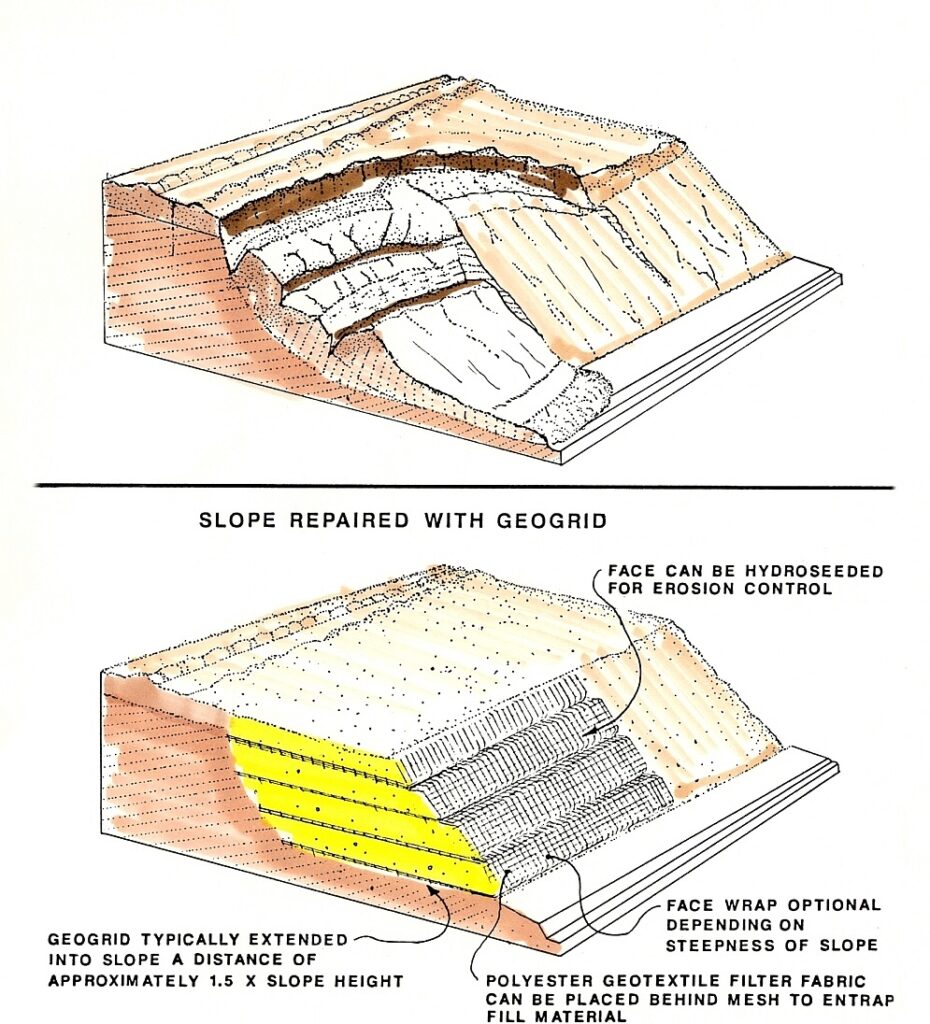
Types of Geogrids
Geogrids come in various types, each designed for specific applications. The choice of geogrid depends on factors such as slope geometry, soil type, and project requirements. Common geogrid types include:
1. Uniaxial Geogrids
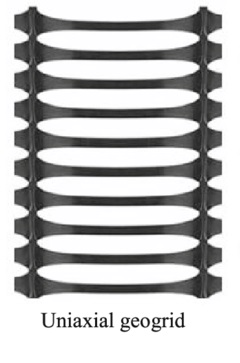
- Designed to provide strength in one primary direction.
- Ideal for steep slopes and retaining walls.
2. Biaxial Geogrids
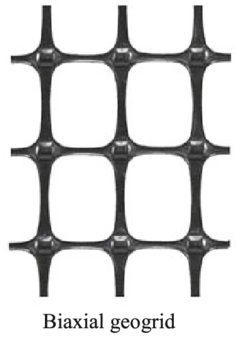
- Offers strength in both the longitudinal and transverse directions.
- Suitable for a wide range of slope angles and applications.
3. High-Strength Geogrids
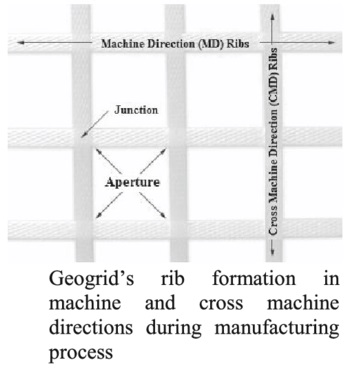
- Engineered for high-load applications, such as highway embankments and bridge abutments.
- Provides enhanced stability for critical projects.
Assessment and Site Preparation
Before embarking on a geogrid-based slope repair project, a thorough site assessment is imperative. This involves:
- Geological Survey: Understand the local geology, soil properties, and potential causes of slope failure.
- Hydrological Analysis: Evaluate rainfall patterns and drainage systems to address water-related issues.
- Slope Geometry: Measure slope angles, heights, and surface conditions to determine geogrid requirements.
Installation of Geogrids

The proper installation of geogrids is critical to the success of a slope repair project. Here are the steps involved:
1. Excavation and Soil Preparation
- Clear the slope of debris and vegetation.
- Excavate to expose the failed slope and assess the extent of damage.
- Prepare the soil surface to ensure proper geogrid adhesion.
2. Geogrid Placement
- Lay the geogrid material in the required orientation (uniaxial or biaxial).
- Overlap geogrid sheets as per manufacturer recommendations.
- Ensure adequate anchoring at the top and bottom of the slope.
3. Backfilling and Compaction
- Gradually backfill the slope with suitable soil material.
- Compact each layer of backfill to the specified density.
- Monitor compaction to prevent voids and ensure geogrid integration.
4. Surface Finish
- Apply erosion control measures, such as erosion control blankets or vegetation, to protect the slope’s surface.
Factors Influencing Geogrid Performance
Several factors can influence the performance of geogrids in slope repair projects:
1. Soil Type
- Different geogrids are suitable for different soil types.
- Soil testing is essential to select the appropriate geogrid material.
2. Slope Angle
- Steeper slopes may require higher-strength geogrids.
- Slope geometry influences the choice of geogrid orientation (uniaxial or biaxial).
3. Environmental Conditions
- Extreme weather conditions can affect geogrid longevity.
- Proper surface protection and maintenance are crucial in harsh environments.
4. Design Considerations
- Proper engineering design ensures geogrids are appropriately sized and placed.
- Consult with a geotechnical engineer for the best design practices.
Case Studies
To illustrate the effectiveness of geogrids in slope repair, let’s explore two real-world case studies:
Case Study 1: Highway Embankment Stabilization
- Overview of a highway embankment prone to landslides.
- Implementation of high-strength geogrids to reinforce the slope.
- Monitoring and long-term performance evaluation.
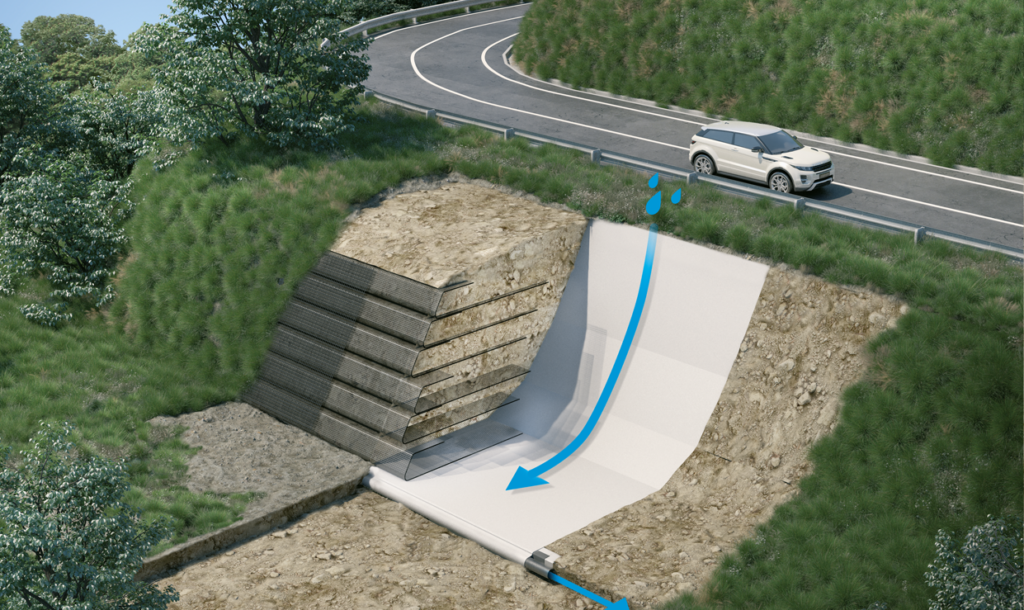
Case Study 2: Residential Property Protection
- A residential property facing soil erosion issues.
- The use of erosion control geogrids to stabilize the backyard slope.
- Before-and-after results and homeowner satisfaction.
Maintenance and Long-Term Monitoring
Slope repair projects involving geogrids require ongoing maintenance and monitoring. Key considerations include:
- Regular inspections to detect signs of distress or degradation.
- Addressing erosion, vegetation, and drainage issues promptly.
- Periodic geogrid performance assessments to ensure continued stability.
Conclusion
In conclusion, the repair of a failed slope using geogrids is a proven and effective method that can safeguard infrastructure and prevent costly disasters. This comprehensive guide has provided insights into the key aspects of utilizing geogrids in slope repair. By following the principles outlined in this article, you can ensure a successful geogrid-based slope repair project. To summarize:
- Understanding the Causes: Recognize the causes of slope failures, including geological, environmental, and human factors.
- The Role of Geogrids: Appreciate how geogrids reinforce soil, control erosion, and expedite repairs.
- Types of Geogrids: Select the appropriate geogrid type based on your project’s specific requirements.
- Assessment and Preparation: Conduct a thorough site assessment and prepare the slope accordingly.
- Installation: Follow the steps for proper geogrid placement, backfilling, and surface finishing.
- Performance Factors: Consider soil type, slope angle, environmental conditions, and engineering design when choosing and installing geogrids.
- Case Studies: Learn from real-world examples of successful geogrid applications.
- Maintenance and Monitoring: Understand the importance of ongoing maintenance and monitoring to ensure long-term stability.
By implementing these best practices, you can not only repair failed slopes but also contribute to the preservation of the natural environment and the safety of communities. Geogrids are a powerful tool in the field of engineering geology, and when used correctly, they can make a significant difference in slope stability and erosion control.
If you have any further questions or require more specific information about repairing failed slopes using geogrids, please feel free to reach out. Your geotechnical projects deserve the expertise and precision that geogrid technology can offer.



